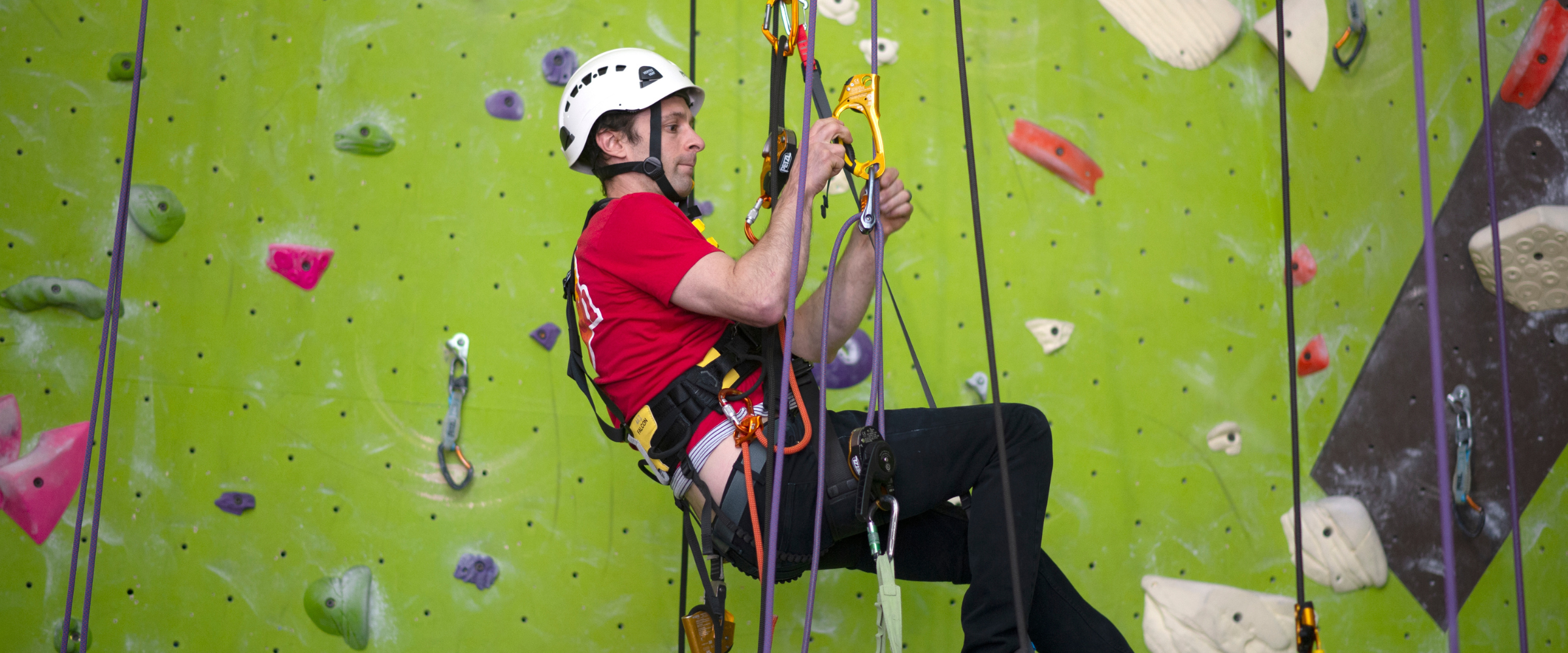Direct Pathway Released for CWA Certifications

Attending training courses and getting certified is a time commitment and can be expensive. Many folks in the indoor climbing industry have years or decades of experience but would still benefit from certification.
To this end, the CWA is very pleased to be launching a Direct Entry pathway for those folks who do exceed the prerequisite experience of the certification.
What does this mean?
Certification means that the person certified has demonstrated competency and knowledge of specific identified technical skills and knowledge related to the area of certification.
For example, a Climbing Wall Instructor (CWI), certification shows that certified folks have demonstrated competency in belaying, climbing, catching falls, and have knowledge of the risks associated with climbing activities.
They have demonstrated the ability to identify the risks in an indoor facility and understand ways to reduce those risks through instruction and monitoring. Additionally, the person has demonstrated that they can implement teaching strategies to introduce new climbers to the skills required to climb without supervision.
CWA certification programs have prerequisite requirements that a candidate must meet. For example, perhaps the candidate must be able to climb a particular grade or have first aid certification before applying for CWA certification. Having prerequisite experience does not ensure the candidate will become certified. More to the point, prerequisite requirements will often dictate that one level of certification must be achieved before the next.
In the CWA certification programs – CWI, Work at Height (WAH), and soon to launch, the Professional Routesetting Certification (PRS), a candidate must be assessed at each level, i.e. Level 1 to progress to Level 2. There may be reciprocity or recognition with specific programs from other organizations as well, for example, an AMGA certified SPI for Level 1 can qualify as a CWI Level 2 with the CWA, but they must still complete the content and assessment requirements for the CWA.
These strict practices and policies are what give a certification its value.
If anyone can just have someone vouch for them without due process, there are bound to be individuals who become certified who should not be. And that reflects badly on the CWA and the indoor climbing industry.
Currently, the CWA Certfication Courses introduce enrolled candidates to concepts and ideas that go beyond the prerequisite requirements through an online or blended course. Candidates can go through the content in their own time and are quizzed at the end of the course to confirm their knowledge. During the in-person course time, the instructor will expand upon these concepts and ideas and use situational learning to guide candidates to practice and apply this information.
During the course, the instructor monitors the actions and discussion participation to confirm the candidate’s knowledge and skill to assess their competency. Some instructors may prefer to designate a specific activity as the assessment activity.
However the assessment activity is conducted, a quality certification program will use an assessment tool. All instructors must use these standardized tools to confirm that a candidate has demonstrated the specific defined skills required for certification. The Assessment tool explicitly describes what skills, behaviors, and knowledge the candidate must demonstrate.
Understanding in Practice: A Hypothetical Situation
Let’s meet Jamie who has been working in an independent gym in the southeastern USA for over 10 years. Jamie climbs indoors, outdoors, boulders, lead climbs, and has been routesetting for eight of those ten years. Anne, the owner of the facility is finding it harder to recruit folks with Jamie’s experience to work in the gym. Staff turnover and training are also becoming more time-consuming.
After a little investigation, Anne decides certification may be the way to go and now wants Jamie to get certified. As Jamie and Anne look over the Certification Standard documents, both agree Jamie is more than capable and experienced to reach the highest level of certification. But it says Jamie must have the prerequisite certifications… hmmm that’s a little annoying.
Jamie is the kind of candidate that the Direct Entry Pathway is designed for. Jamie has lots of industry experience and can exceed the prerequisite experience required.
Jamie can apply to the Direct Entry and, if the application is successful, move straight to an Assessment event. There is no course time where skills are explained or practiced. The Direct Entry is an assessment-only process. Jamie will still be given access to all the online content and must go through the content and meet the full assessment criteria for certification.
Jamie must achieve the required final grade as well. Finally, Jamie’s skills will be reviewed in person and they must pass all the required assessment criteria at the in-person event.
For a prospective candidate who is newer to the industry and has less experience, the Direct Entry pathway is not appropriate. CWI Certification is not the same as a belay check, WAH certification is not as simple as ascending and descending a rope, and PRS certification is not just setting a route.
Candidates are expected to be able to predict and avoid common risks that arise when working in a climbing facility when they are certified. They are taught about the risks, hazards, and challenges that climbers and workers face. Certified candidates have demonstrated a thorough understanding of the skills and concepts needed to perform their jobs at a professional level.
